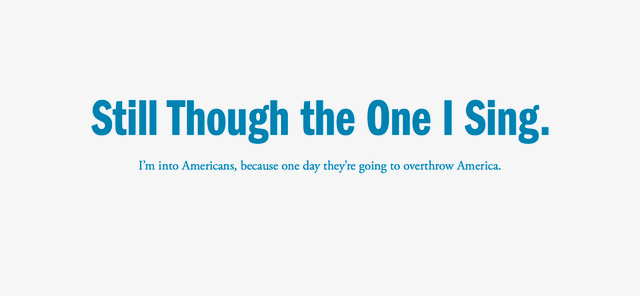The Artist as Culture Producer, a conversation with Paddy Johnson, Kat Kiernan, Sharon Louden, Carrie Moyer, and Austin Thomas
Thursday, September 21, 6:30 – 8:30 PM
RSVP via Eventbrite
Paddy Johnson, Austin Thomas, Kat Kiernan and Carrie Moyer join Sharon Louden in a conversation centered around issues from her book, The Artist as Culture Producer: Living and Sustaining a Creative Life, at the Elizabeth Foundation for the Arts on September 21st from 6:30-8:30pm. As part of Louden's 94-stop conversation tour, discussion will focus on how contributors in the book have impactful, artistic activities as change agents in their communities. Their first-hand stories in the book show the general public how contemporary artists of the 21st century add to creative economies through their out-of-the-box thinking while also generously contributing to the well-being of others. Although there is a misconception that artists are invisible and hidden, the truth is that they furnish measurable and innovative outcomes at the front lines of education, the non-profit sector, and corporate environments. The event is presented in conjunction with EFA Project Space's exhibition Near & Dear, curated by Carrie Moyer and on view from September 15 - October 28th, 2017. Space is limited. Please RSVP via Eventbrite to reserve your seats: www.eventbrite.com/e/the-artist-as-culture-producer-tickets-37886430333.
This event takes place in conjunction with EFA Project Space's current exhibition, Near & Dear, on view from September 15 - October 28, 2017.
PARTICIPANT BIOS
Paddy Johnson is the Founding Editor of the blog Art F City. In addition to her work at AFC, she has been published in magazines such as New York Magazine, The New York Times and The Economist. Paddy lectures widely about art and the Internet at venues including Yale University, Parsons, Rutgers, South by Southwest, and the Whitney Independent Study Program. In 2008, she became the first blogger to earn a Creative Capital Arts Writers grant from the Creative Capital Foundation. Paddy was nominated for best art critic at The Rob Pruitt Art Awards in 2010 and 2013. In 2014, she was the subject of a VICE profile for her work as an independent art blogger. Paddy maintains an active presence as a curator as well, most recently curating Geographically Indeterminate Fantasies for Providence College.
Kat Kiernan is the Editor-in-Chief of the photography magazine Don’t Take Pictures, as well as the Director of Panopticon Gallery in Boston, Massachusetts. Her writings have appeared in numerous publications including Art New England, Big, Red, and Shiny, Feature Shoot, and most recently in Norm Diamond's monograph What Is Left Behind: Stories From Estate Sales (Daylight Books, 2017). Kat received the Griffin Museum of Photography’s Rising Star Award in 2015 for her contributions to the photographic community. Her photographs have been exhibited across the United States, and Photoboite Agency named her one of 2012’s 30 women photographers under the age of 30 to watch. Kat divides her time between Brooklyn, New York and Boston. She holds a BFA in photography from Lesley University College of Art and Design.
Sharon M. Louden is an artist, educator, advocate for artists, and editor of the Living and Sustaining a Creative Life series of books. She graduated with a BFA from the School of the Art Institute of Chicago and an MFA from Yale University School of Art. Her work has been exhibited in numerous venues including the Aldrich Contemporary Art Museum, the Drawing Center, Carnegie Mellon University, Weisman Art Museum, National Gallery of Art, Birmingham Museum of Art, Weatherspoon Art Museum and the Kemper Museum of Contemporary Art. Louden's work is held in major public and private collections including the Whitney Museum of American Art, National Gallery of Art, Neuberger Museum of Art, Arkansas Arts Center, Yale University Art Gallery, Weatherspoon Art Museum, and the Museum of Fine Arts, Houston, among others.
Carrie Moyer is a painter and writer. Most recently, her paintings were included in the 2017 Whitney Biennial. Moyer has been showing her work in the US and Europe for over twenty years; she was the subject of two solo museum exhibitions, “Carrie Moyer: Pirate Jenny,” Tang Museum, Saratoga Springs, NY (2013) and “Carrie Moyer: Interstellar,” Worcester Museum of Art, MA (2012). Between 1991-2008, Moyer and photographer Sue Schaffner collaborated as Dyke Action Machine!, a public art project that humorously dissected mainstream advertising through the insertion of lesbian imagery. Moyer’s writing has appeared in Art in America, Artforum, the Brooklyn Rail and various monographs. She is a professor and the Director of MFA Program at Hunter College. Moyer is represented by DC Moore Gallery in New York City.
Austin Thomas is an artist, curator and community builder. Her work has been exhibited at The Drawing Center, Murray Guy, The Sculpture Center, Art in General and at White columns (all in NYC) and internationally in Singapore, Australia, and Hungary and at the Kunsthalle Exnergasse in Vienna. From 2007 to 2014, she directed the influential Pocket Utopia gallery. She is a graduate of NYU and in the Summer of 2016 her permanent public sculpture for a new park in Brooklyn was unveiled. She has also done public commissions for the Public Art Fund and Grinnell College. Thomas's work is featured in the book titled Living and Sustaining a Creative Life: Essays by 40 Working Artists and will also be featured in that book’s sequel The Artist as Culture Producer: Living and Sustaining a Creative Life, which were both edited by Sharon Louden.


















